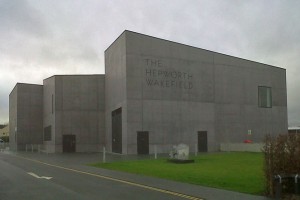Went to see the Robin Ironside exhibition at Pallant House in the pouring rain yesterday. A small show, rather dimly lit, presumably because of the fragile medium used in most of the pictures. But a treat to see a group of his work, as it is remarkably hard to come by in the art market or in any public gallery and it is also remarkably individual.
Ironside was, par excellence, a Romantic artist. One might group him with David Jones in a number of ways: the slightly esoteric/mythical subject matter and the highly detailed, pale watercolours used to depict it. He also wrote about Jones amongst other things. The pictures require a lot of close study to unravel them and without the (hard to read) notes, one would have little chance of deciphering what the subject matter was.
He is interesting not only as a particular type of British mid-century artist, but also because he worked at the Tate under Rothenstein and wrote an important short book on British art since 1939, which came out in 1947.
The show came with a supporting catalogue which I haven’t had a chance to read yet. All credit yet again to Pallant House for its tremendous series of shows of 20th C British artists.
 In the rest of Pallant House were 2 large Michael Andrews’ canvases. He is ripe for a major exhibition. I vividly recall seeing a show of his, I think at the Hayward Gallery, in the 1980’s and trying unsuccessfully to buy a picture afterwards from his dealer.
In the rest of Pallant House were 2 large Michael Andrews’ canvases. He is ripe for a major exhibition. I vividly recall seeing a show of his, I think at the Hayward Gallery, in the 1980’s and trying unsuccessfully to buy a picture afterwards from his dealer.